Easter Island’s Famous Statues Have Bodies Underneath
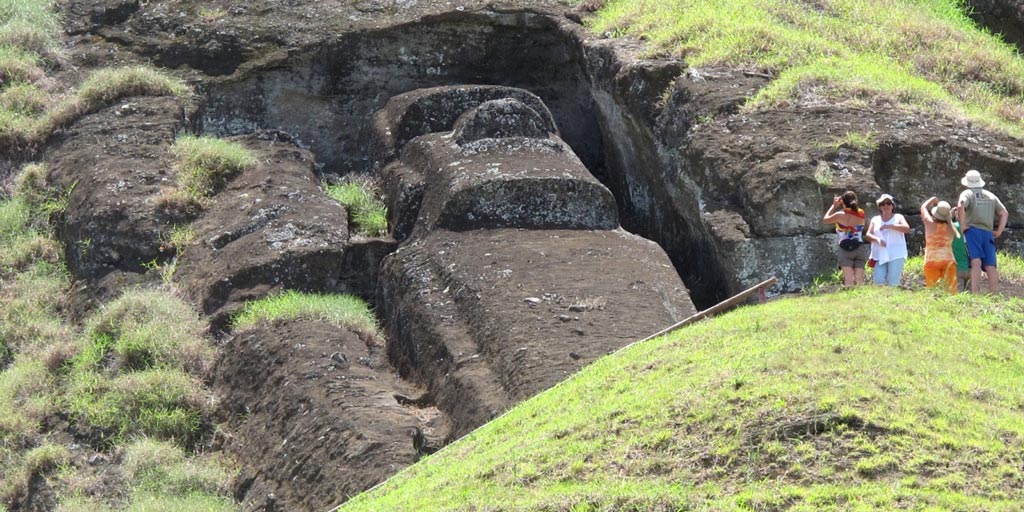
There are few monuments as easily and instantaneously recognizable by people throughout the world as the famous moai statues of Easter Island (Rapa Nui).
The iconic “heads” decorate the landscape and their sheer size has sparked the imaginations of generations of archaeologists and travel enthusiasts alike for their distinctive appearance and curious installation throughout the hills.
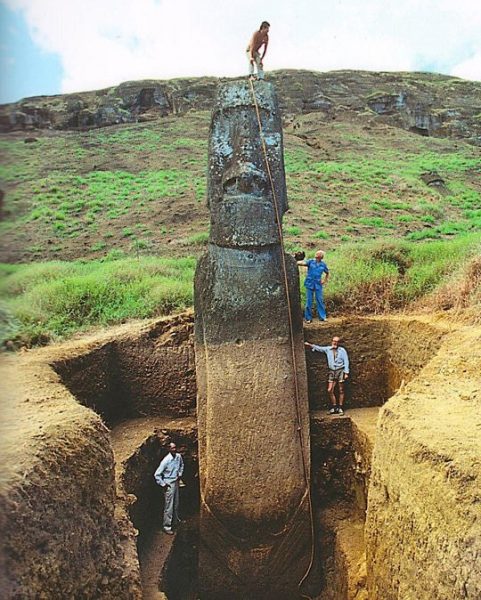
The Polynesian island, a special territory of Chile, is among the most remote inhabited places in the world. It’s residents live a cool 1,100 miles from their nearest neighbors on Pitcairn Island, and the nearest continental mainland, the Pacific shore of Chile, is some 2,200 miles away.
The moai were hand-carved by the islanders from volcanic tuff – a rock formed from compacted volcanic ash – from a single quarry on an extinct volcano, and then somehow conveyed to their various resting places. They were all created by the early Rapa Nui people between the 10th to 16th centuries.
These days, most of us are aware that the “Easter Island heads” are actually attached to torsos and sometimes legs hidden beneath the earth, having been buried by landslides or similar events in the centuries since their installation.
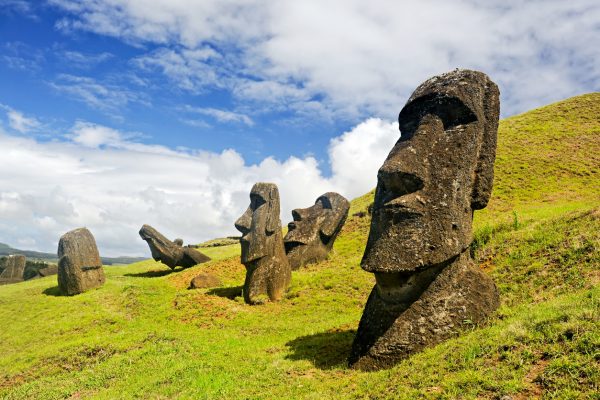
Researchers from UCLA’s nine-year-long Easter Island Statue Project obtained permission the conduct scientific excavations of the bases of some of the moai, and in addition to discovering the hidden depths of the statues, they discovered intricate carvings around the bases. Encyclopedia Britannica describes the stonework as “masterful”.
Perhaps the greatest unsolved mystery of the moai is how they came to rest in the places they are now buried. There are close to 900 moai on the island, the largest of which are estimated to weigh more than 80 tons.
Knowing the precise location of the materials that they were carved from, researchers have long puzzled over the method the islanders used to move the statues to their final resting locations.
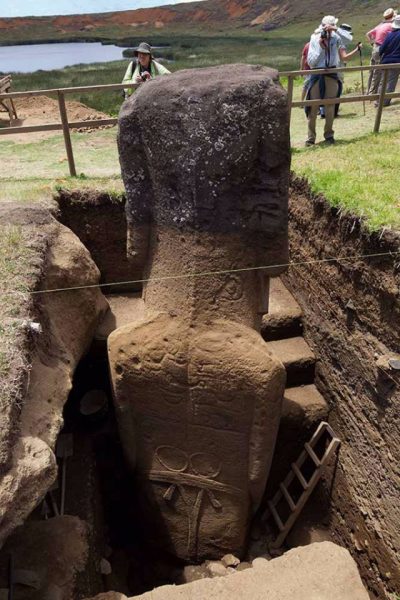
It is theorized that the statues were made to commemorate important tribesmen, and the ornate carvings that have been protected from the elements by being buried are symbolic of the family or tribe to which they belonged.
A more recent theory, presented in the journal PLOS One on January 10, 2019, proposes that the site of each moai and their monumental bases, or ahu, was chosen to mark a source of fresh water or other essential resource.
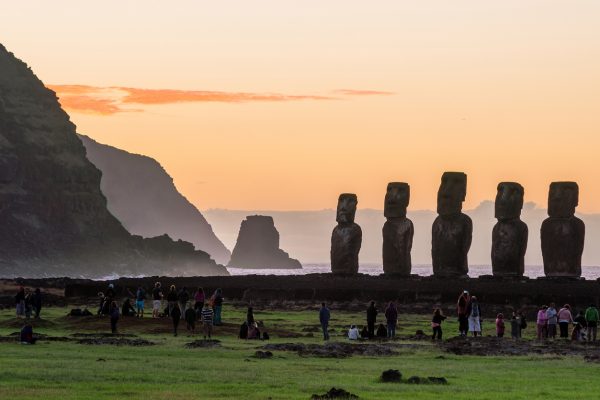
The researchers suggest that this could support the idea of moai as territorial or resource control markers.
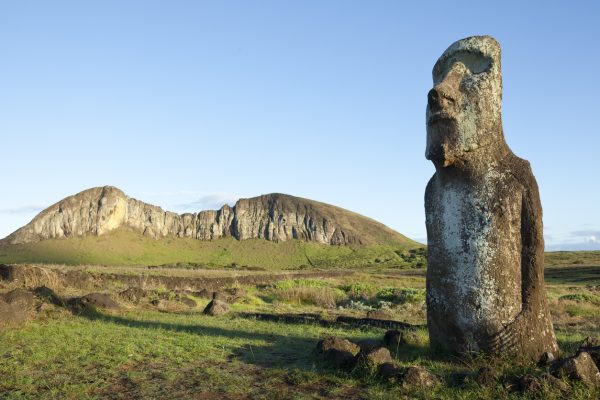
The amount of effort that went into these monuments gives us valuable insight into the world of the ancient Rapa Nui society.
It is estimated that carving a single statue required a team of five or six men working for nearly a year, and so for the duration of the construction these men could not be engaged in foraging, hunting or maintenance of shared infrastructure. Evidence of the society’s wealth grows when one considers the herculean efforts required to move a completed statue.
National Geographic notes that some statues were moved as far as 11 miles, and the fauna that existed on the island precludes the possibility of animal assistance.
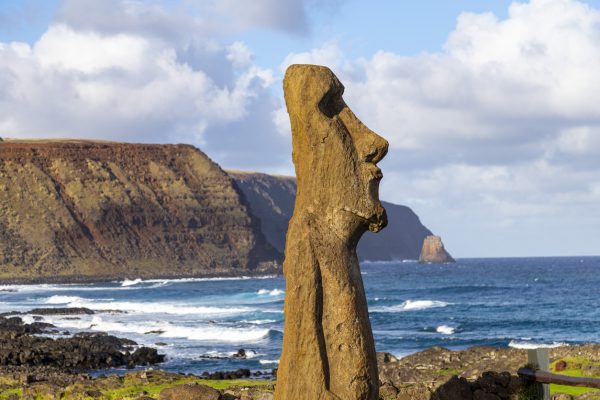
To have dragged the statues into place, with no large trees to make wheels or cranes, would require a team of perhaps as many as 250 men, according to some estimates, to position and erect a single moai. Other theories of the logistics of positioning the statues exist, and several of these have been tested by scientists.
However, the islanders will tell you that the statues walked into place – and it is entirely possible that they did. Well, kind of.
In 2012, anthropologists Carl Lipo of Binghamton University and Terry Hunt of the University of Arizona put folklore to the test.
The scientists theorized that the moai could have been transported from the quarry in an upright position by using a rocking motion.
According to National Geographic, they “observed that fat bellies allowed the statues to be tilted forward easily, and heavy, D-shaped bases could have allowed handlers to roll and rock the moai side to side.”
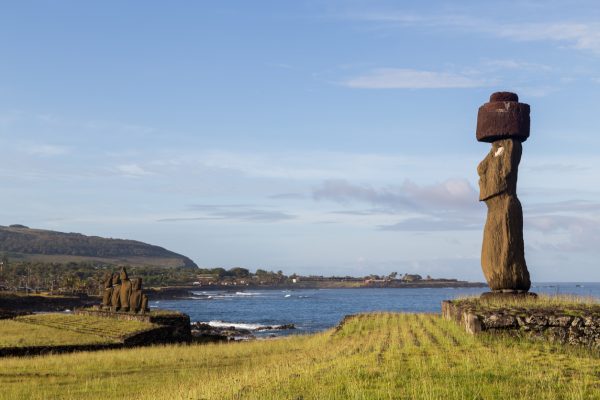
Their team were able to move a ten-foot, five-ton statue using the power of just 18 people and three sturdy ropes. With some practice, they concluded, a much larger, heavier moai really could be “walked” by means of rocking it on its base to its destination.
Little is known of what happened to the inhabitants of Easter Island. The scope of their works throughout the centuries suggests a long period of comparative wealth, but little remains of the society that bore the famous moai.
The original language is all but gone, with a 19th century Polynesian dialect that was introduced by missionaries later giving way to Spanish as a result of Chilean administration.
Encyclopedia Britannica suggests some kind of catastrophe or civil war occurred between the Spanish “rediscovery” of the island in 1770 and the arrival of British explorer James Cook in 1774.
From a Spanish estimate of 3,000, Cook’s expedition found a population of 600 to 700 men and less than 30 women on the island. Cook recorded that many of the statues appeared to have been deliberately toppled.
The population slowly recovered but smallpox brought by the European explorers and Peruvian slave raids caused numbers to plummet once again. By 1877, there were just over 100 native inhabitants on Easter Island.
Though the islanders are said to preserve and celebrate their past, Britannica notes, the 20th century saw a “complete acculturation” of the island to continental values.
Nobody after the very first European explorers reported observing the locals praying to the moai, perhaps indicating that their decline had already begun between first contact and rediscovery some five decades later.
But the culture nonetheless persisted for centuries previous, during which time they continued to build these monolithic works of art in what we must assume was a time of great prosperity.
Wanted: Two People with ‘basic survival skills’ To Look After Great Blasket Island
The mystery surrounding their destruction nearly eclipses that of their heyday. Future generations will continue to be haunted as much by the disappearance of the Easter Island statues’ creators as by the statues themselves.
